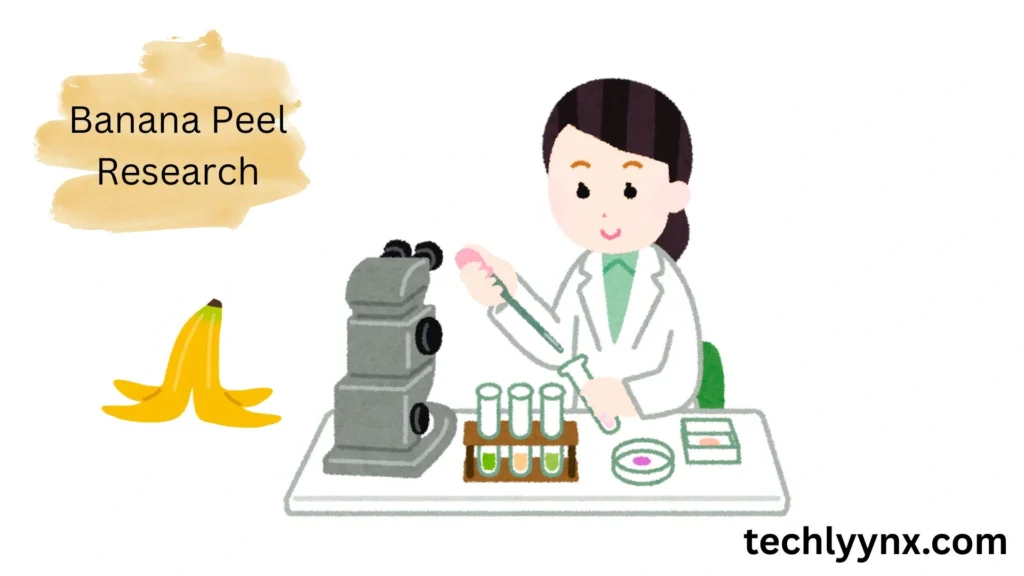Techlyynx is going to share an important piece of research information with you all … Yes, you’re right, this is Banana Peel Research, and this will really be an amazing finding.
If you have some curiosity in research and science experiments, then this is going to be an exceptional experience with us.
We are sharing our all-important research work on the topic.
(From Waste to Insight: Proximate and XRF Analysis of Banana Peel)
This will be a series of different posts covering all the aspects of our study.
In this article, rather than diving into the deep research, we will just take a look at different processes involved in our banana peel research.
So stay with us!
Banana Peel Proximate Analysis: What we found?
Important Note!
This research is performed at the University of Engineering and Technology (UET) by a team of professional students.
The team members were.
1- Engr. Zaeem Ashraf (Leader)
2- Engr. Amtul Mateen & Engr. Ziza Javed
This study took place under the active supervision of Dr. Ansar Javed (Professor at UET Lahore) as a base in his PhD research program.
The Research Laboratories was:
Particle Technology Lab, UET Lahore
Chemical Process Industries Lab, UET Lahore.
All the major steps and works will be described below.
Background of Banana Peel Research
Banana peel is one of the most abundant agricultural wastes in the world. From small-scale setups to large-scale industries everywhere, you can find banana peel as a natural and pure by product.
But the problem here is that, despitehaving these rich nutritional and mineral benefits, we often discard them as waste.
Now this issue has got importance, and this should be utilized. The recent research took place globally and emphasized its importance in various industries.
We also decided to take a look at Banana Peel Research to discover something unusual and important.
Main Objectives of Banana Peel Research
This study will explore the banana peels thoroughly with banana peel research.
Compositional and elemental properties of banana peels.
- Proximate Analysis of Banana Peels
- XRF analysis of banana peels
- Industrial expectations
Introduction
We are going to conduct banana peel research.
This study will investigate its potential for its use in many industries as a cheap and sustainable source of energy.
We will try to apply some standard analytical techniques to get the desired information. We will perform Proximate and X-ray fluorescence analysis . At the end a comprehensive output wie will get.
Methodology of Banana Peel Research
The methodology of the whole research process will be discussed below step by step.
Fresh banana peel
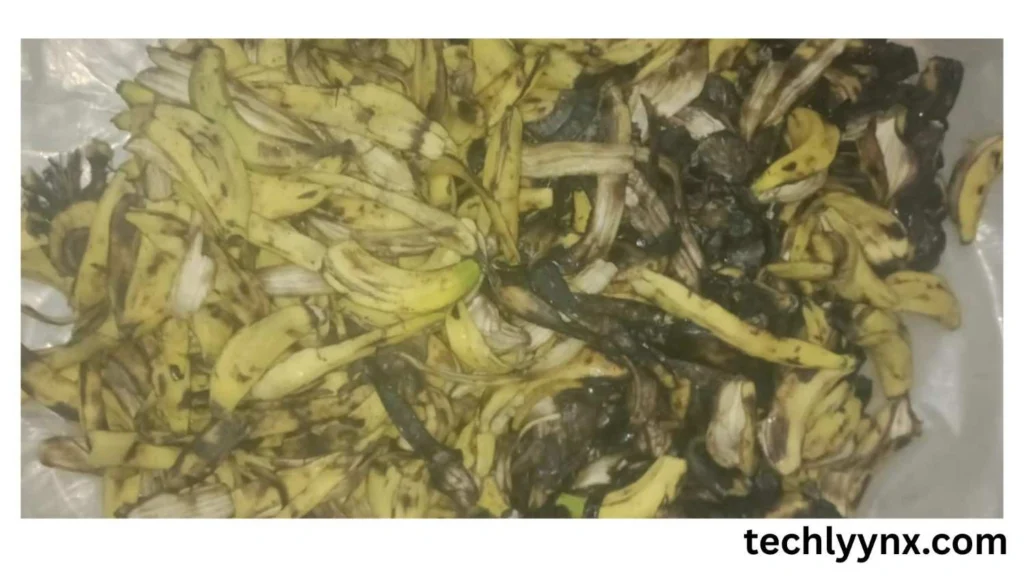
First of all, there was a challenge to get a handsome quantity of banana peel (10-15 kg). My fellow girls proposed that they would try to find some of the amount. But I stopped them by saying that I will adjust it on my own from the hostel canteen, as this was really related to the small-scale setup of the canteen.
I started to collect the peels in a sack. Every day I got almost 3 kg of peels.
So in 3 days I got the targeted 10 kg of banana peels for our banana peel research.
Washing
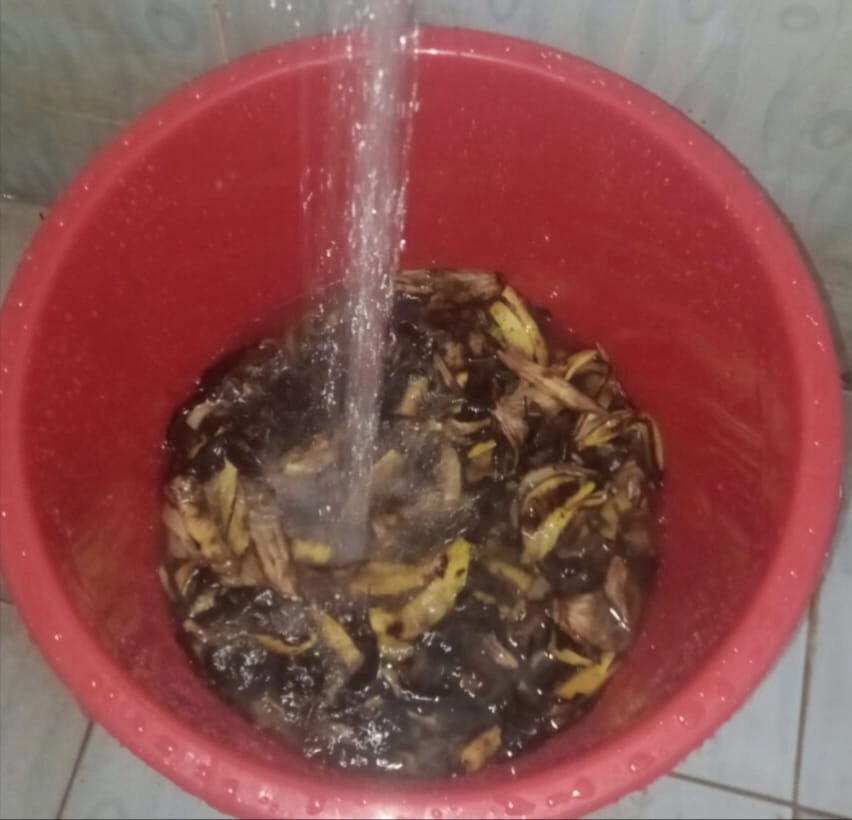
The 2nd step was washing. As a peel contains some liquid-like compositions on its inner side. To remove that, we washed the peel.
Here was a problem. The first time we weighed the material, its weight became almost half. This really hurt our quantity. So next time we decided not to wash that again.
Drying
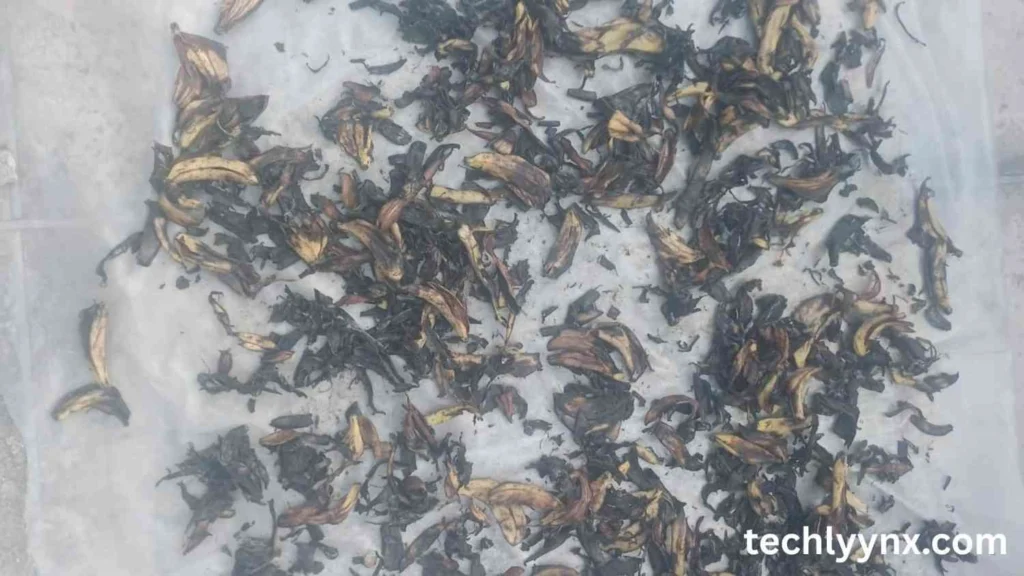
Now it was time to dry that material for banana peel research. The drying process was to remove all the liquid and moisture content from the material.
We spread material on a sheet at the hostel roof to dry it in sunlight.
Grinding
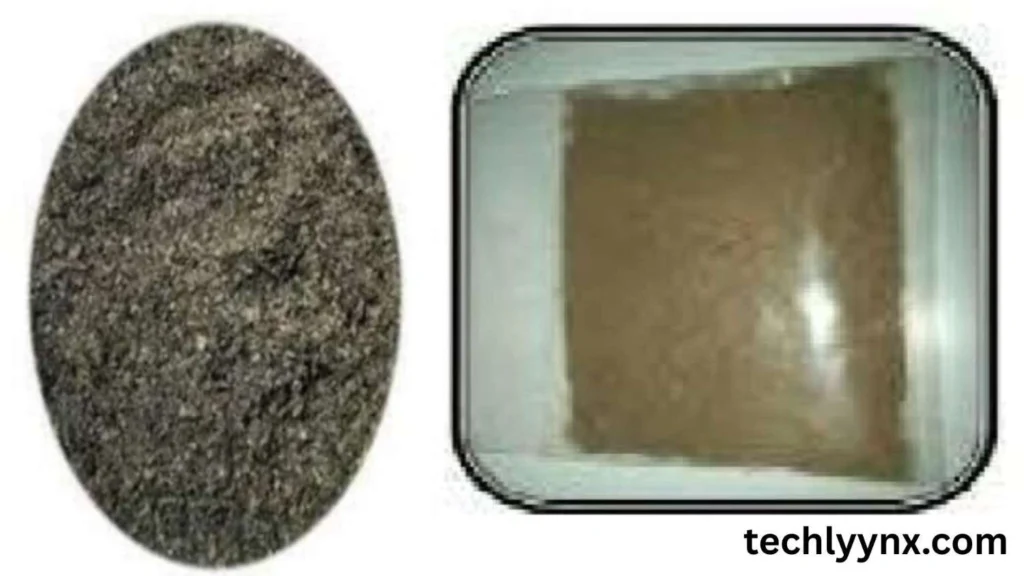
When the material was fully dry, we collected it into an airtightbag. Got it into the lab to grind. There we ground all the material in a batch-wise manner.
The final product was in a fine powder to use it further in banana peel.
Sieving
After grinding, the particles of powder were still not homogenized. To get particles of equal size, we have to pass this through sieve sets.
After sieving, we collected the uniform-sized particles in airtightbags for further processing.
Proximate Analysis
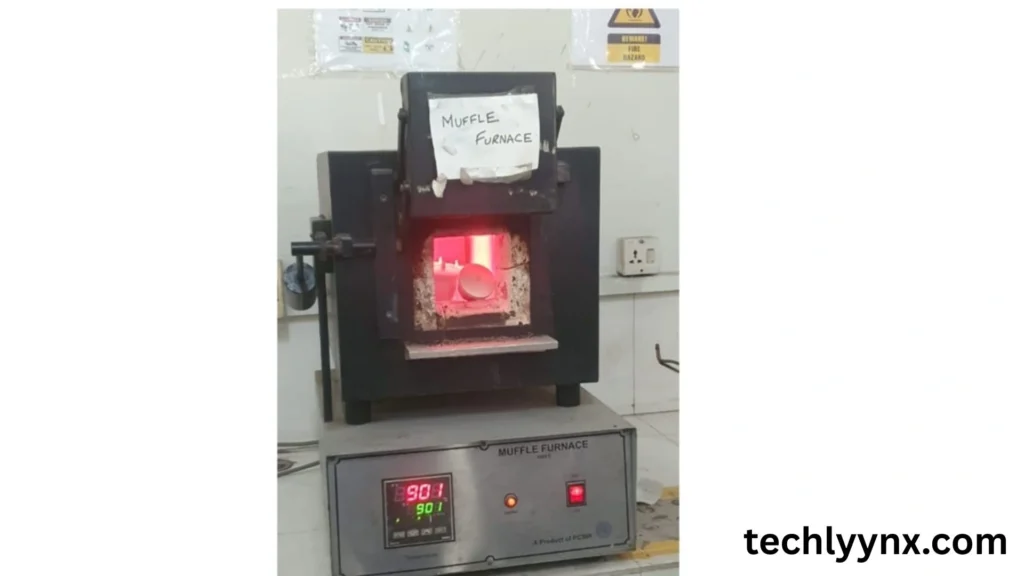
Conducted the proximate and XRF analyses.
Proximate analysis is to determine basic compositions.
The XRF analysis was for complex elemental analysis in banana peel research.
Moisture and volatile content tests.
Note! Here we will discuss the results only.
The step-by-step procedure of each analysis will be in separate specific posts.
Moisture Content
The moisture content was found to be 9%. We put 1 g of material in a china dish after considering its change in weight.
Dried in the lab oven at 105°C for 5 hours.
Volatile content
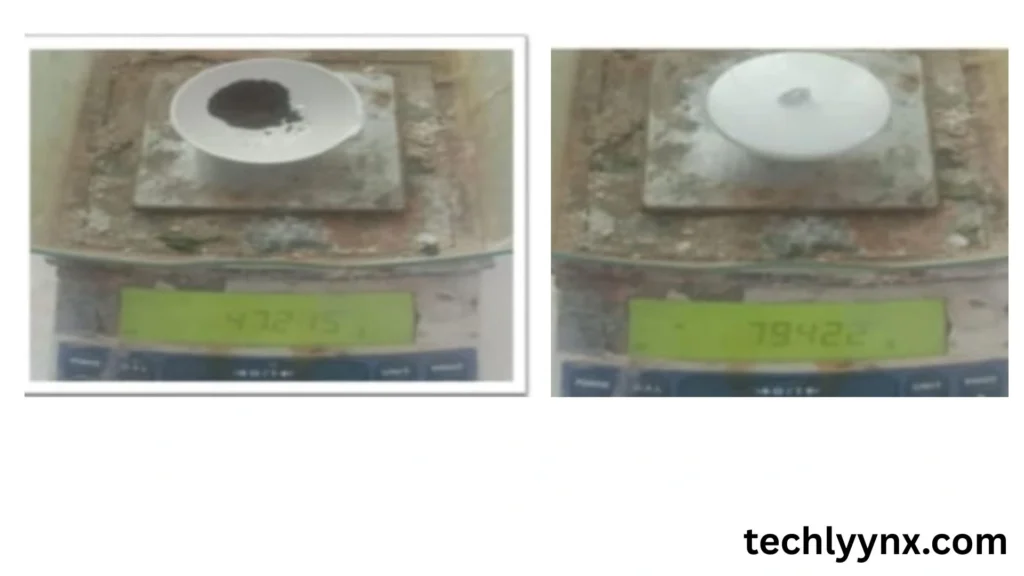
The volatility result was in the value of 73.19%.
We performed this test by placing the material in a muffle furnace at 900°C. This was really a time taking process. We spent almost 3-4 hours while doing this.
Ash test
- The ash content was calculated to be 9.46%. This was after complete burning of sample material.
Fixed Carbon
- The fixed carbon result was 7.06 percent. This is performed after all other tests. The results of volatile and moisture contents are the building blocks for this.
XRF Analysis
Here is another quality test called X-ray fluorescence analysis. This is also an important part of banana peel research.In this specific test we fall X-rays on the test sample.This gives us complete information about elementals analysts of banana peel. This is not a destructive technique mean this will not tend to alter other properties of sample.
Now it’s time for X-ray fluorescence analysis in banana peel research.
The result of XRF analysis is given below in the table.
| Sr No | Symbol | Metal Name | Percentage (%) |
|---|---|---|---|
| 1 | K | Potassium | 19.39 |
| 2 | Mg | Magnesium | 7.12 |
| 3 | Ca | Calcium | 4.44 |
| 4 | Na | Sodium | 1.80 |
| 5 | P | Phosphorus | 0.90 |
| 6 | Fe | Iron | 13.77 |
| 7 | Mn | Manganese | 7.88 |
| 8 | Zn | Zinc | 6.94 |
| 9 | Cu | Copper | 2.33 |
Now in next upcoming posts every processi we will take step by step.
Wait for other interesting and informative posts.
Next post ….

